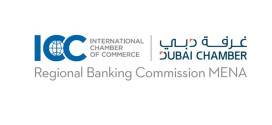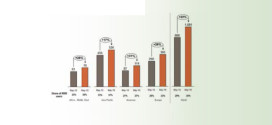“For many banks, the question has not been ‘how do I succeed’ but ‘how do I survive’? according to David Hamilton, president of SunGard’s banking business.
Fundamentally, he explained, the global banking model had shifted and a transformation was occurring in how money was being managed as banks strove to re-build trust and create value for their shareholders.
“A focus of investment for banks is on ensuring regulatory compliance and in assuring shareholders that they fully understand and can manage their risk exposures. Ultimately, these investments need to drive more informed strategic decision-making and to help enable a return to profitability for the bank.”
SunGard has identified 10 trends shaping the industry in 2012 “as banks look to capitalise on change through transparency, efficiency and networks”.
1. Banks will need clarity on their cost of cash to help ensure that while regulatory requirements for capital adequacy are met, cautionary surplus cash and capital reserve strategies do not impact too heavily on return on equity (ROE), hindering organisational profit and growth objectives
2. Retail, commercial and private banks are striving for robust customer management to optimise customer relationships and rebuild the trust lost as a result of the financial crisis
3. With macro-economic factors causing volatility in customer behaviour, banks need to safeguard deposits and continually validate their lending strategies to improve risk- adjusted profitabilty
4. Banks are seeking an integrated, enterprise approach to strategic risk management to help meet regulatory requirements and allocate capital more efficiently
5. Banks are also looking to understand the true risk profile of their individual businesses to help them make decisions about asset divestiture and potential acquisitions, in order to re-organise their business models to more risk-averse areas
In the longer term:
6. Exponential growth in the use of mobile devices worldwide means banks need an integrated approach to mobility – as customers increasingly expect banking services to be “always on and always accessible”
7. Banks are under increasing pressure to improve business transparency, given the rising impact that “popular” politics and special interest groups have had on the regulators and on government policy
8. Financial intermediation will change structurally as alternative models of banking emerge, as technological innovation and deregulation accelerate “non-banks”, in particular to financial inclusion programmes for the unbanked/marginally-banked
9. Tension between regulators, markets and investors will continue as bank regulators demand greater transparency and lower risk, while bank investors continue to seek higher levels of returns
10. Technology innovation and adoption rates mean retail, commercial and private banks are re-examining how they capture, segment and service their customer base, as existing strategies for demographic profiling by gender, age and “key life events” cease to provide accurate insight into customer expectations.
 Cash And Trade Magazine For Cash and Trade professionals in the Middle East
Cash And Trade Magazine For Cash and Trade professionals in the Middle East






One comment